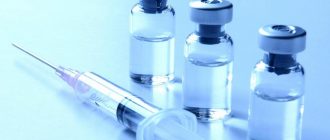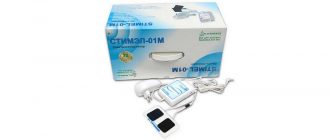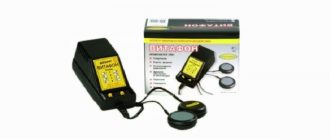Transurethral resection of the prostate (TUR or TURP) is the most commonly used operation for advanced cases of prostate adenoma. The operation is carried out in a way that is quite gentle for the patient, however, despite this, it requires some preparatory and relatively long rehabilitation periods. In some cases, it can cause various complications.
The essence of the operation
Transurethral resection of the prostate is a minimally invasive (performed without an incision) operation to remove diseased prostate tissue. It is performed using a resectoscope - a cylindrical instrument equipped with an electric loop, a light source, a camera and a fluid supply and pumping system. Due to the action of an electric current, the affected tissue is cut off, the camera allows you to control the progress of the operation and not touch healthy areas, the liquid supply and pumping system allows you to wash the operation site for a better image on the camera and disinfection of the intervention area.
TUR removal of prostate adenoma is performed through the urinary tract, which, due to the absence of an incision, reduces the risk of infection and bleeding in the postoperative period, and also reduces the duration of hospitalization and rehabilitation.
TUR operation for prostate adenoma is considered a classic method of removing BPH and a more gentle procedure than prostatectomy - removal of the gland through an incision in the anterior abdominal region or through small holes using a robotic assistant (DaVinci robot). However, there are more modern methods that involve the use of a laser, which can further reduce rehabilitation and protect the patient from possible complications. In addition, it is worth knowing that early resectoscopes were monopolar, which could cause additional complications. Bipolar transurethral resection of the prostate is considered much safer.
During TUR of the prostate, epidural anesthesia is used, i.e. an anesthetic is injected into the spine, sensitivity of the lower part of the body disappears, however, the patient remains conscious. This method is safer than general anesthesia used for prostatectomy because it does not cause complications that can result from general anesthesia.
During a TUR of prostate adenoma, it is possible to preserve the removed parts for histological analysis, which makes it possible to more accurately determine the possibility of the onset of an asymptomatic stage of oncology. With some types of laser prostate removal this is not possible.
Indications
Indications for TUR of prostate adenoma:
- frequent urge to urinate, weak stream, feeling of incomplete emptying;
- pain or burning during urination or ejaculation;
- presence of blood in urine or semen;
- stones in the bladder or prostate;
- relapses or the emergence of new infections of the urogenital tract are possible;
- diverticula of the bladder wall (formation of additional cavities in the organ);
- contraindications for prostatectomy, previous operations on the gastrointestinal tract or pelvic organs;
- TUR for prostatitis can be performed in advanced cases of the chronic form of the disease.
Contraindications
Prostate TURP surgery is not performed in the following cases:
- with immobility of the hip joints due to tuberculosis, arthritis or injury;
- acute inflammation in the pelvic organs;
- end-stage adenoma or carcinoma;
- varicocele;
- bleeding disorders;
- pathologies of the cardiovascular system.
Preparation
Planned transurethral resection of prostate hyperplasia involves a short preparatory period. 1.5-2 weeks before it you need to stop taking anticoagulants. To select an anesthetic, you need to undergo standard tests - blood, urine, electrocardiography, ultrasound of the pelvic organs and chest x-ray.
Antibiotics may also be prescribed, starting 2 days before surgery and lasting 7-10 days after surgery.
1 day before the operation you need to give up your last meal and drink, and do not consume anything on the day of the procedure.
Carrying out
The procedure for TURP of the prostate gland is as follows:
- The patient is placed on the operating table, legs are raised and spread apart.
- The TUR operation for prostate adenoma is performed under local anesthesia; for this, the patient is given anesthesia between the 4th and 5th vertebrae. If desired, general anesthesia can be used, however, it causes more complications during the rehabilitation period, so it is recommended to avoid it.
- The area is disinfected.
- A special gel is injected into the urethra.
- A resectoscope is inserted into the urethra and gradual removal of the affected tissue begins.
- The technique of transurethral resection of the prostate involves the use of an irrigation fluid during the operation, which will wash away blood and particles of the prostate for better imaging and control over the progress of the intervention.
- Hemostasis (stopping bleeding) of the damaged vessels is carried out and the resectoscope is removed.
- A catheter is installed in the urethra.
- The operation lasts about 1.5 hours.
Rehabilitation
The length of stay in the hospital after a TUR is usually 3-7 days. During this time, the process of urination is observed. Blood may be found in the urine; this is not considered a complication; the symptom goes away on its own within a short time. The possibility of infection is also controlled. In addition, a number of simple exercises are recommended to prevent thrombosis; they should be performed every 3-4 hours, the rest of the time observing bed rest.
After this period, the catheter is removed from the urinary canal and the patient undergoes outpatient rehabilitation. After 3-4 weeks, urination should completely normalize; for this, it is recommended to maintain a drinking regime and consume at least 3 liters of water daily. However, it is not recommended to drink in the evening and at night (after 20 hours). It is acceptable to drink non-carbonated water, juices, fruit drinks and tea. Coffee and alcohol are prohibited.
Salty, fatty and spicy foods are excluded from the diet, as well as foods that increase gas formation and the risk of constipation.
It is recommended to avoid physical activity, especially lifting heavy weights. Driving is also not recommended. Sexual activity is limited and allowed only 4 weeks after surgery.
Various groups of medications and periodic examinations may be prescribed.
Possible complications
Possible complications of TURP of the prostate include:
- Infection with hospital microflora. This complication is observed in 30% of cases.
- Subsequent narrowing of the urethra for several years and sclerosis of the bladder neck. It is observed in 4-5% of cases and requires repeated surgery.
- Retrograde ejaculation (ejaculation occurs not outward, but into the bladder) and associated infertility. Observed in 70% of cases.
- Impotence is observed in 1% of cases.
- Urinary incontinence, which can be treated with simple exercises.



